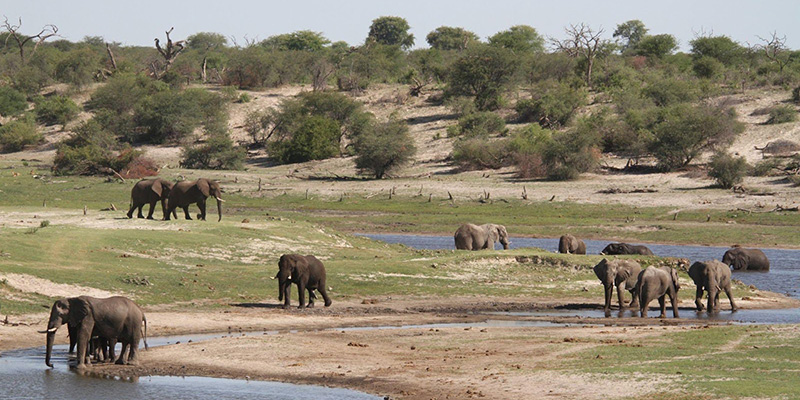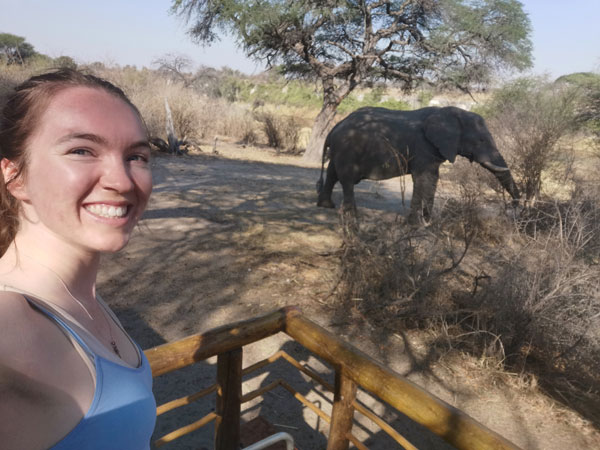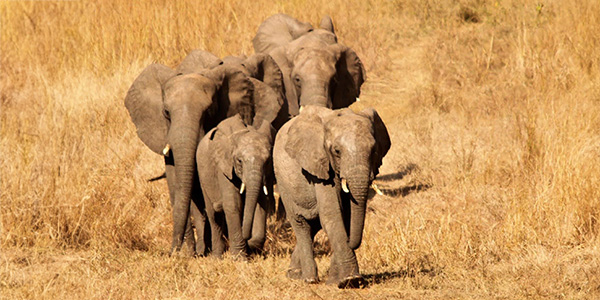Reaching a new audience: behavioural ecologists of the future?
As researchers, we spend a lot of time communicating our work. Why is it important? What did we do? What have we learnt? Where could we take this next?

Mostly this is to other researchers with a similar field of interest, maybe at a conference or a training workshop. After all, if we don’t communicate our work, what is really the purpose of doing it?
Sometimes we communicate our work to a wider audience, explaining what we do to the public, which is a very different sort of presentation. Generally, public outreach involves very limited information regarding the fine details of precisely how we calculated specific parameters, or how we overcame bias in our study design. Instead, we focus on the whys of the project, and much broader explanations of how the results may impact our understanding of the world, rather than the particulars of how we came to these conclusions. I love being asked to give public outreach talks, as it is an opportunity to show people the excitement of science and share the things about which we are passionate.
Recently, I was asked to give a public outreach presentation to a very different audience than I have presented to before: an entire primary school. 350 students from ages 4 to 11 – what could possibly go wrong? In fact, the whole experience was a joy and a privilege. The children were extremely engaged, so enthusiastic to hear all about my topic, and listened brilliantly, with only a couple of brief occasions where the excitement became too much, and we had to pause to calm them down!
It helps that the topic of my PhD is a simple one to imagine: do male African savannah elephants have best friends, and do groups of males help to protect one another from danger? It is easy for a group of children to picture themselves as a group of elephants, deciding who to hang out with in the playground, looking to an older friend or teacher if they feel scared. I opted for lots of pictures and opportunities for them to use their imaginations, and at least for this school that certainly seemed to be a winning combination.

Breakfast time in the Elephants for Africa camp! (Makgadikgadi Pans, Botswana, 2022)
We started with a chat about female social structure. A family group is led by the matriarch, who is often the grandma, and all of the females stay with their family for their whole lives. The youngest ones are the most protected, so they stay in the centre of the group whenever they are moving around as there is potential that the herd might run into predators. We then shifted to talking about the males: how they leave their mother’s herd at around 8 to 16 years old, when they join male groups, and how at this point it becomes much harder to track them long term because of their very long migratory routes.

An elephant family group, showing the youngest in the middle and protected from any potential danger (Chamabondo vlei, Zambezi National Park, Zimbabwe, 2017)
To track an elephant long term we need one of two things: either it needs some form of GPS or electronic tag that tells us where they go, or we need to be able to recognise an individual. Given the extreme costs of collaring elephants, most researchers opt for the latter. The next part of the presentation, which the children seemed to really enjoy, was a discussion of the ways in which we can identify individual elephants. For this I introduced my favourite model: a male by the name of Squank from the Mosi-Oa-Tunya National Park, Zambia, who I met back in 2016 and whose tusks point in an absurd configuration of one up and one down. We could always recognise Squank if he was present, even when looking at a group over a kilometre away. As well as his crazy tusks, Squank also has a fantastic set of ear notches, which are normally the primary method of elephant facial recognition. The children seemed to find this particularly fascinating, and it was probably the section I was asked most questions about at the end. They wanted to know all about how the elephants catch their ears on thorn bushes and tear them, and if it hurts and how often it happens and how thick is their skin and how sharp are the thorns. So many fantastic questions, many of which I could only guess at an answer!

“Squank” (also known as study male number 40) showing off his magnificently mismatched tusks, and the notches and holes in his ears that we can use to identify him. The purple lines down the outside of his head we can use to assess his age, becoming more hourglass shaped as he ages. (Mosi-Oa-Tunya National Park, Zambia, 2016)
Next came the more serious part: why do we actually need to know what the elephants are doing? I was nervous about this bit. Elephants can be extremely dangerous to local communities and cause immense damage to property and crops. It can be very difficult to describe the details of human-elephant coexistence without causing either the humans or elephants to come across as “the bad guys”. The last thing that I wanted was to give the children the impression that elephants are evil for stealing the farmers’ crops, or that the farmers are for chasing away the elephants. The best I could come up with, and I can only hope that it worked, was to ask them about their own gardens. Every hand went up when I asked who had seen a snail in their garden eating the flowers, so I tried to build up a picture around that. The snail comes into the garden because it’s where the food is tasty. He doesn’t know it’s not for him and just goes to the best plants. Now imagine that that snail can eat a kilogram of plants for every student in the room, and there are five of them. Now we have a problem. We use snail and slug repellents to encourage the snails to stay in the local park instead of coming into our garden. By understanding more about elephants, we can come up with ways to encourage them to stay in the national park too. They seemed to get the idea, and hopefully no one took that as good reason to start a war on the molluscs of Yorkshire…
Up until this point, everything had been about the background of my project, and the basics of elephant research. I finished up the session with a discussion of what I actually do for my PhD, showing them some videos of the playback experiments that I was running in Botswana in 2022. While I sadly don’t have any specific results yet, I have some ideas about what it potentially looks like they’re doing, so I focussed on those. I’m not sure I even needed to say anything, as they were just so excited to see videos of wild elephants! My playbacks are testing whether male elephants also protect the youngest individuals, as we see in females, and if young males copy the behaviour of older males when in danger. To do this, we played a potentially threatening sound to a group of males and filmed their response, recording whether each individual looked and/or moved towards, away from or side-on to every other individual within the group. I showed them one video clip from each of my three types of threat stimulus: first a local dove species, which I was using as a control and to which the elephants generally don’t respond; next a lion roaring, which generally causes vigilance behaviour but not avoidance of the threat; and finally a human shouting, which universally caused the elephants to flee, though they did not always move very far before returning to their previous behaviour. The students absolutely loved the videos, and it was a fantastic high to end on. Almost every question that wasn’t about elephant recognition was asking about different things that elephants are scared of, including “are elephants afraid of snakes?” which is a question to which I am yet to find out the answer! Maybe that will one day be the topic of his PhD.
I would like to extend my huge thanks to St Oswald’s primary school in Fulford for the invite to come and speak, to Katy Haxby for organising it, and to all of the students who listened so wonderfully and asked such great questions. I’m sure there are some budding behavioural ecologists in there, and I can only hope that some of them were inspired by my own love of research and elephants.